Makers Mark Distillery
Introduction
Text-to-speech Audio
Images
A barrel of the Makers Mark bourbon
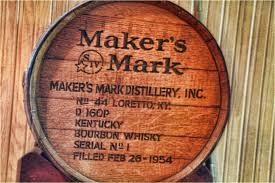
A classic bottle of Makers Mark
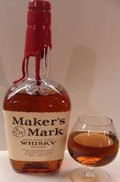
The infamous copper pots stills
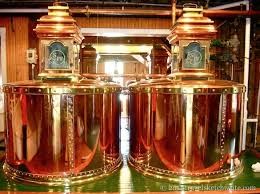
The entry for tourists to explore
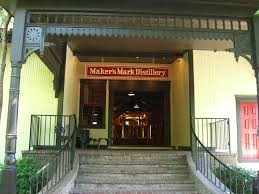
The Makers Mark Distillery
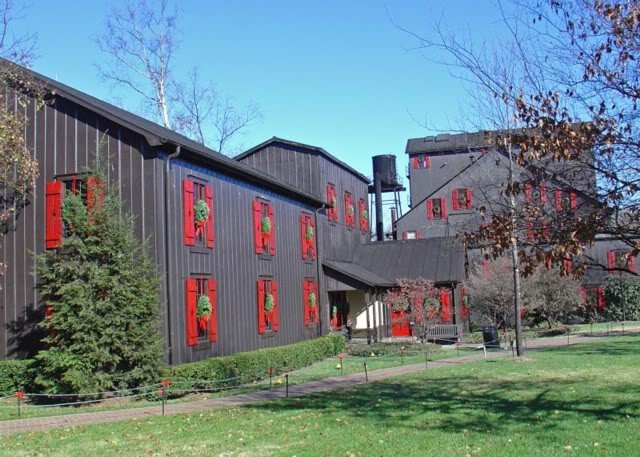
The iconic wax seal in production
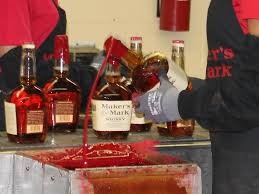
Backstory and Context
Text-to-speech Audio
The idea to craft a new bourbon could not have come at a more inopportune time. After the prohibition, people were thirsty certainly, but it was not a thirst for bourbon, but rather Scotch and Canadian whiskey. Bourbon had the reputation of a rough blue-collar drink. President Roosevelt even instructed the bourbon distilleries to shut down. This was to preserve the grain and support the war effort. In addition, the Korean War threatened a second permanent closure of the bourbon business. The unpopularity of bourbon did not aid the hope for its revival by Bill Samuels Sr. He wanted to change the taste of bourbon and give it a new name in society.
Samuels already had a history of distilling. His father owned a distillery with a special recipe of his own. Even though he was experienced, Samuels enlisted help from fellow bourbon makers including Jerry Beam, Hap Motlow, Ed Shapiro, and Pappy Van Winkle. These men, specifically Van Winkle, instructed Bill Sr. never to cook a wheated mash under pressure. The discussion was not so much about the process but rather one of taste. Samuels wanted to appeal to the front of the palate where reside sweet and spicy rather than sour and bitter. The advisory team, as they called themselves broke things down into three stages: Grain, Process, and Maturation. Bourbon, at that time, was made with corn, rye, and malt. However, Samuels thought rye triggered the taste buds in the back palate. So he eliminated that ingredient. With that much tweaking, he needed another member in his bourbon army, his wife Margie.
Margie Samuels became the engine in this well-oiled machine. After the advisory team had the groundwork for the recipe, she decided to test it by baking bread. She baked the bread with all the possible grains that could he used to make whiskey resulting in 150 loaves. As they shared these loaves to people to gauge what tasted best, the clear winner was red river wheat. The invention of the Hammer Mill and the pressure cooker had advanced the distilling of whiskey since Samuels Sr. had worked with his father. However, the committee noted the issues that would come with the use of these tools. Samuels explained how if they were to use The Hammer Mill it wouldn’t grind the grains but would explode them, triggering a trace amount of heat covered up by heavier whiskeys but not bourbon. Similar issues would be present in the pressure cooker. Therefore, Samuels Sr. looked into the maturation process. He went to a place in Missouri and discovered that most barrels were made from staves which dried in kilns. The owner then told Samuels he should leave the wood outside for a year and a half so the elements would help reduce the natural tannins. With that, he also recommended Samuels char the wood. That magic, as it was magic, laid the foundation for it all.
Although the bourbon industry was still in turmoil, Bill Samuels Sr. was determined to create a new name for this “blue collar drink.” In 1953, he found an old run down distillery in Loretto, Kentucky ( where Makers Mark still resides today) where he began his journey to change the name of alcohol forever. One of the reasons he purchased the spot was because it had a spring-fed lake right on the grounds. The spring water ran over native Kentucky limestone that filtered in without the weight of iron in the drink. With new and innovative ideas about taste and a first batch finished, Samuels shocked his family and burned his Dad’s old recipe. This marked the new era of bourbon. While Samuels Sr. worked with the recipe, his wife mandated the three most important things regarding business: hand-torn labels, hand dipped wax seals and a cork. These became the iconic symbols now known across the world.
With the four W’s: Water, Wheat, Wood, and Wax, Samuels believed that the industry had what it needed for success. Initially, Samuels’ high prices shocked a lot of people considering the low status and lack of campaigning. The Samuels family moved forward regardless. Bill Samuels Jr., at first not wanting to be a part of the family business, soon became the company's biggest marketer. He later took over the business. To combat the early perceptions of the bourbon industry, in1965, Makers Mark released an edgy campaign “It tastes expensive…it is.” The company continued with savvy marketing strategies which began to turn the little old distillery into the fortune machine it was meant to be. A most successful airline strategy is what caught the attention of the media. The Wall Street Journal published the article in 1980, “Makers Goes Against the Grain to Make Its Mark,” and on the front page, a discussion of all the obstacles the little distillery overcame in spite of the public’s perception. This sparked the interest of people all over the world.
In a new decade, Makers Mark turned from regional distiller to global phenomenon. Makers Mark is now run by Bill Samuels Jr.’s son Rob who still is amazed at the legendary work his grandfather created. Even though it’s in the backwoods of Kentucky, thousands of visitors come to see it and experience revolutionary bourbon making. The popularity made Makers Mark the only operating distillery in America ever to be titled a National Landmark. Makers Mark began as low-status beverage, but now that red wax seal represents the sophistication its founders envisioned.
Sources
Kleinman, Geoff. "The Story of Maker's Mark Whiskey." March 15, 2012. http://www.drinkspirits.com/bourbon/story-makers-mark-whiskey.
Mitenbuler, Reid. "Maker's Marketing: How Bourbon Came Back Into Style." Serious Eats. Accessed February 11, 2015. http://drinks.seriouseats.com/2013/02/history-makers-mark-bourbon-advertising-expensive.html.
